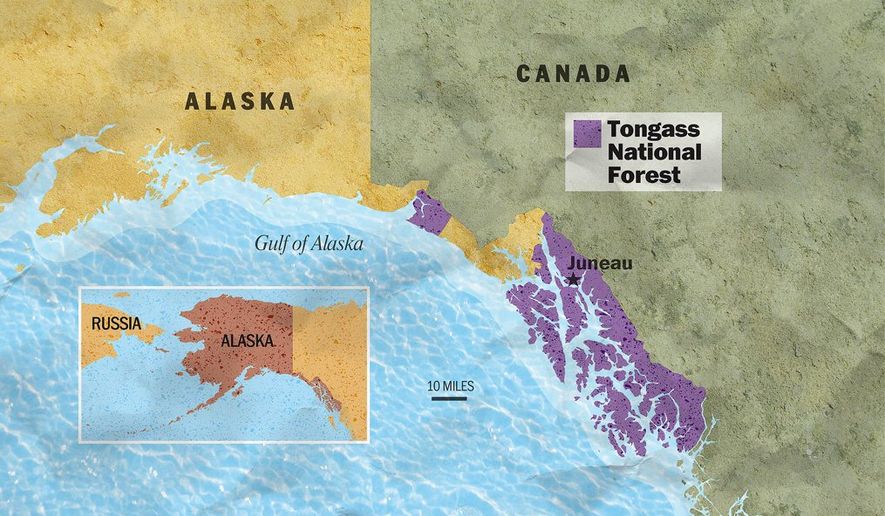OPINION:
The Iranian Hostage Crisis, the “War on Drugs,” the bombing of Libya, the successful invasion of Grenada, the booming economy, the restoration of American morale, and the now-famous call for Mikhail Gorbachev to “Tear down this wall!” These are just some of the historical turning points that come to mind when remembering the legacy of our 40th president of the United States, Ronald Reagan. But what is often not spoken about as much, and yet perhaps of similar importance to President Reagan’s foreign policy and economic legacies, is his commitment to protecting and maintaining our great country’s natural beauty.
Reagan, both through his commitment to laissez faire principles and stemming from his love of the wide-open West, was committed to conservationist policies. His policies had their roots in limited government intervention, but they also led to environmental protections that have lasted the test of time. His unique style resulted in an administration that limited the development on millions of acres of public lands while also saving the American people billions of dollars (in keeping with his reputation for fiscal conservatism).
Reagan’s commitment to the environment is best stated by his own words:
“What is a conservative after all, but one who conserves, one who is committed to protecting and holding close the things by which we live. … And we want to protect and conserve the land on which we live — our countryside, our rivers and mountains, our plains and meadows and forests. This is our patrimony. This is what we leave to our children. And our great moral responsibility is to leave it to them either as we found it or better than we found it.”
Reagan signed more federal wilderness bills into law than any other president since the Wilderness Act was enacted in 1964 — 43 bills that designated more than 10 million acres of wilderness areas in 27 states. Federally designated wilderness areas, passed through Congress and signed by the president, give the highest level of protection to our country’s public lands. Wilderness keeps certain areas as close to their natural, primitive states as possible and they protect some of our most critical and pristine wildlife habitats and sources of clean drinking water.
Now, at the start of our new decade, a new conservation fight looms and calls into mind what Reagan’s response might have been. What would Reagan do if he were to face the current political call from some to dismantle protections on millions of acres of wild, pristine forests in one of the country’s most important national forests?
These protections that, once gone, could lead to clear cutting and industrial logging of some of the last old-growth tree stands left in America. This would not only fill in streams with eroded dirt that could decimate local salmon populations (and the fishermen and local economies that rely upon them) but would also ignore the pleas from local indigenous tribal sovereign nations that call this area their homeland — government overreach in its most egregious form. All of this and more is exactly what is now happening in the Tongass National Forest of Alaska.
Established by President Theodore Roosevelt in 1907, the Tongass National Forest is America’s largest national forest and one of the largest intact temperate rainforests in the world. Its wild lands and waters are vast enough to support biological diversity and healthy habitats for many wild species, including all five of North America’s Pacific salmon species as well as brown bears and Sitka black-tailed deer. In 2001, the most backcountry and pristine areas of the Tongass were set aside as protected by the U.S. Forest Service’s National Roadless Rule.
A highly important conservation measure, the “Roadless Rule” protects clean drinking water sources, wildlife habitat, world-class recreation, hunting and fishing opportunities across more than 50 million acres of backcountry, roadless areas in national forests across the country. The rule protects 9.5 million acres in the Tongass. Now, the state of Alaska is petitioning the federal government to remove protections on the Tongass, which could open these critically important wild areas to industrial development.
If the application of the Roadless Rule to the magnificent Tongass National Forest is eliminated and this pristine land is destroyed, there will be no bringing it back. Grim images of eroded topsoil and depleted, barren wastelands marred by harsh concrete roads are just a glimpse into the future of the wreckage such an exemption would cause.
Reagan, the Westerner, who owned and loved his 600-acre ranch in California, did not like waste. And while he is no longer with us, we know from his history of protecting the environment, he would have urged caution, before decisions are made which could adversely affect the Tongass National Forest forever.
• Craig Shirley, a presidential historian, is the author of four books on Ronald Reagan.




Please read our comment policy before commenting.